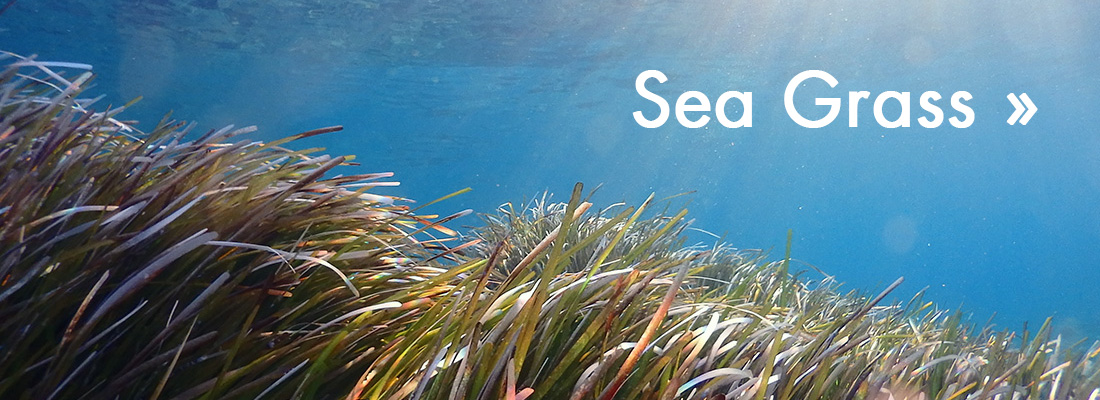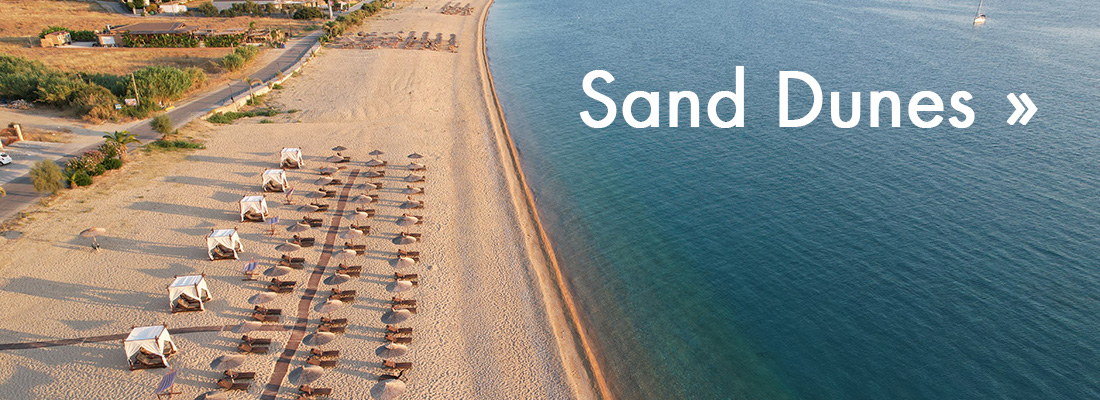Sea Grass
Posidonia oceanica is a species of sea grass spread across the Mediterranean sea. It grows in patches along the nearshore zone, at depths from 2 to 40 meters. It is sometimes referred to as Neptune Grass or Mediterranean Tape weed. It is the slowest developing seagrass, growing at a rate of only one to six centimeters per year and forming large underwater grassy meadows. The leaves have a turnover time from 130 days to almost a year, but the roots and rhizomes have a turnover time in the order of centuries.
Although P. oceanica only covers 2 – 3% of the Mediterranean seafloor, its meadows have a significant contribution in carbon absorption and oxygen production. Of all seagrasses, P. oceanica has the greatest carbon absorption capacity, defining it as a major blue (marine) carbon sink with a significant potential in the mitigation of climate change. One meadow can absorb 15 times more carbon than a similar size area of tropical rainforest.
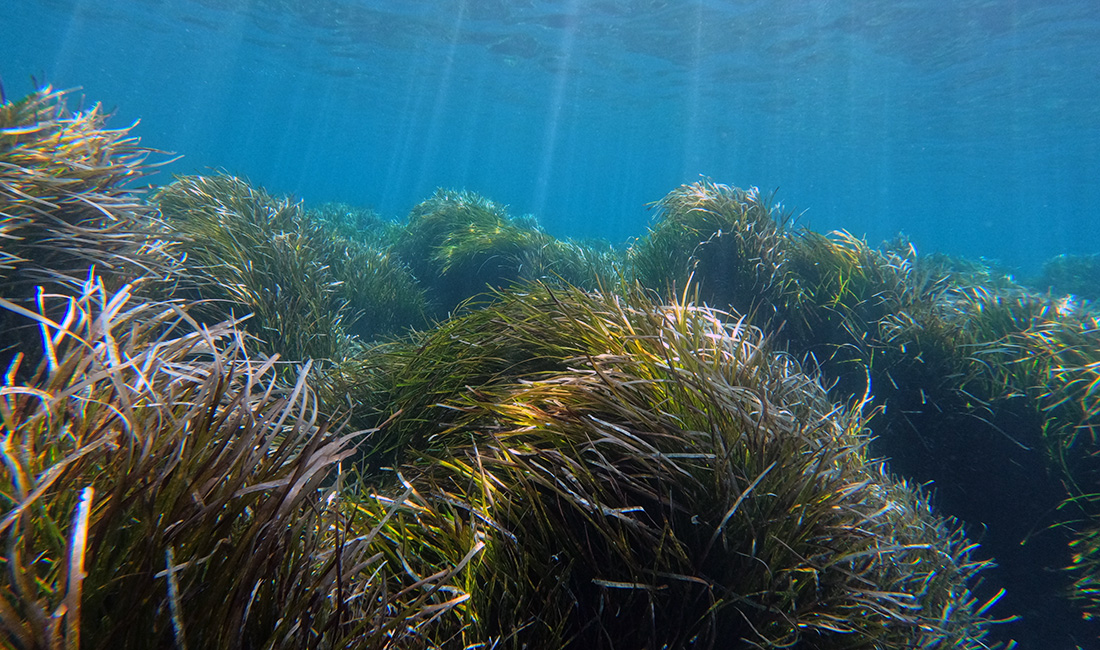
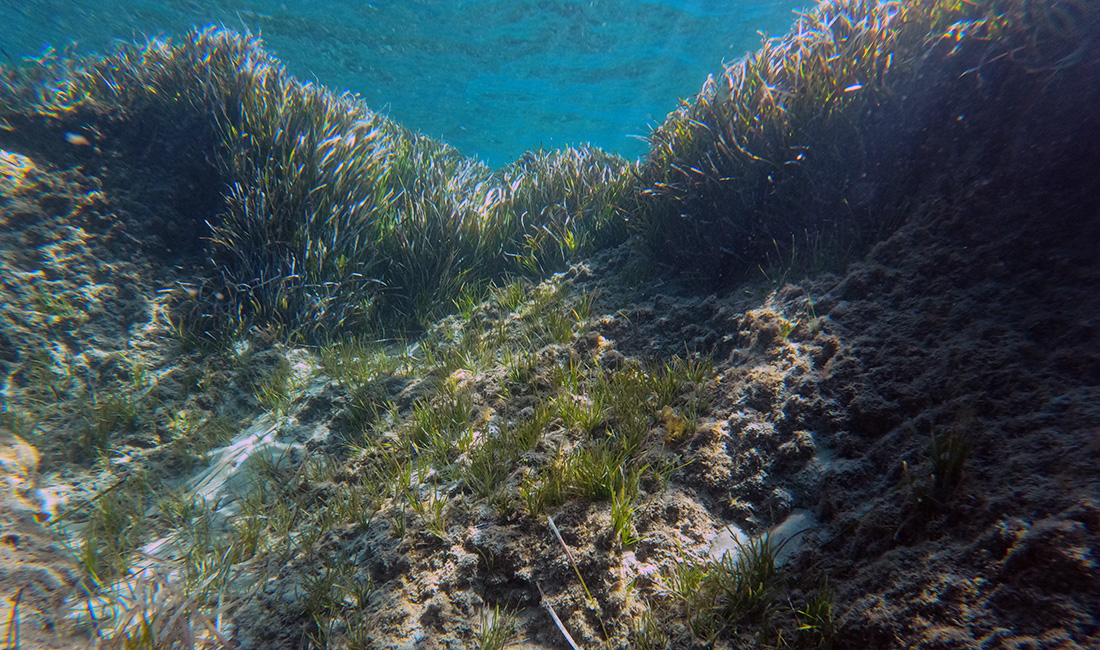
Posidonia oceanica also acts as a sink of potentially toxic trace elements from common pollutants such as nickel, chromium, arsenic, silver, and caesium, and has been found to absorb radioactive materials, synthetic compounds, and heavy metals.
Seagrass meadows in the nearshore zone are amongst the first affected by environmental changes. By studying the extent and health of the meadows, we can understand and monitor the quality of coastal waters. Compared to other seagrasses, P. oceanica is the most sensitive to biological changes.
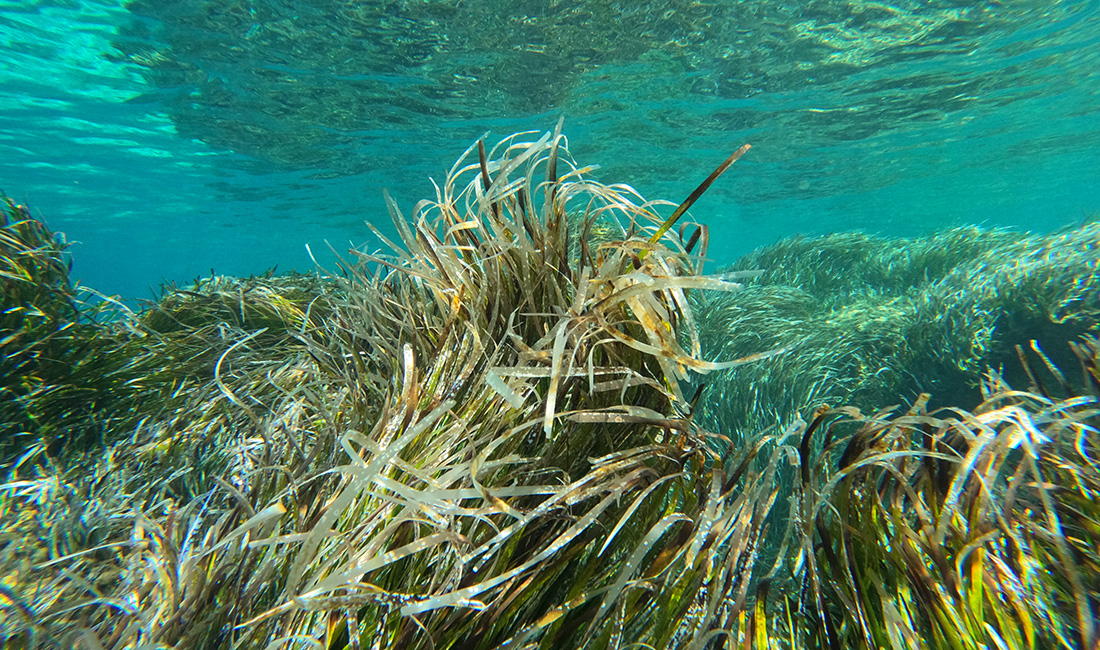
P. oceanica forms natural reefs, protecting the shore from erosion. It dampens wave and tidal motion, traps grains of sand and microplastics providing a natural filter that ensures clearer and cleaner waters, and forms highly organic sediment mattes at the bottom of the sea that resemble peat formations. These mattes result in the elevation of the sea bottom and can reach more than 5 meters in height.
The meadows provide shelter, reproduction, and foraging sites for more than 1500 animals and 400 plant species. Amongst the plethora of fish, mollusks, crustaceans, and echinoderms, within the meadows in the Mediterranean, we can observe the endangered fan mussel (Pinna nobilis), green and loggerhead sea turtles (Chelonia mydas and Caretta caretta), and the broadnosed pipefish (Syngnathus typhle) who cannot live outside the meadows.
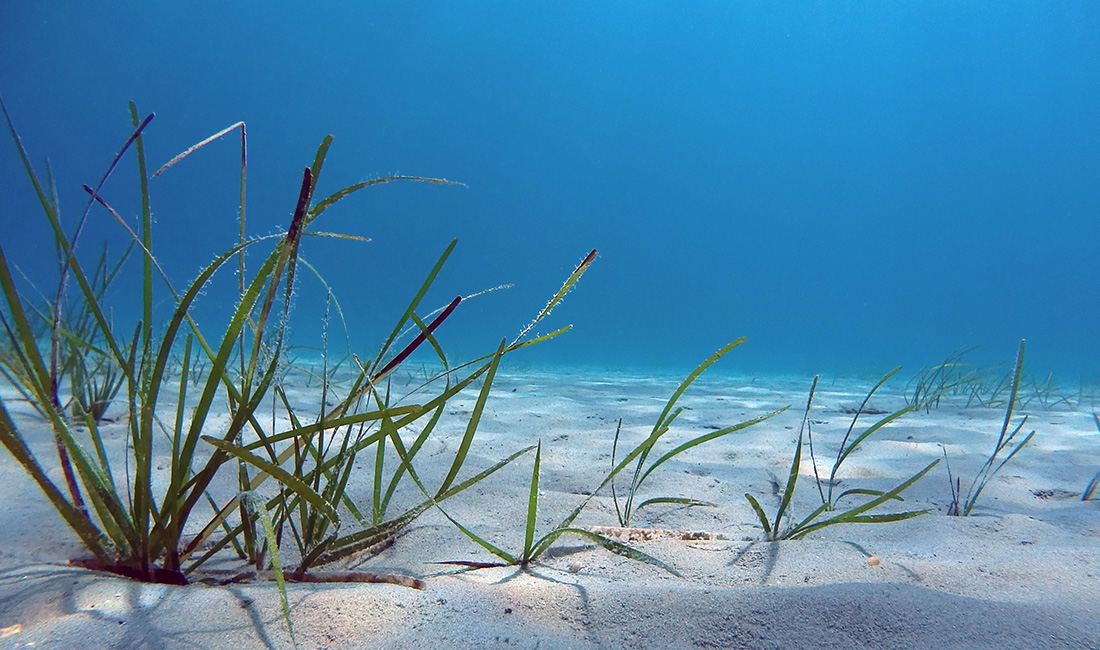
Threats
Environmental changes, such as the rise in sea temperature and the increase of carbon dioxide concentration in the ocean, are happening rapidly, not giving enough time for seagrass meadows to adapt. It is important to note that P. oceanica has a slow genetic evolutionary rate; although it is able to adapt to its environment, it takes significantly longer than other organisms to do so, thus putting the meadows at grave risk.
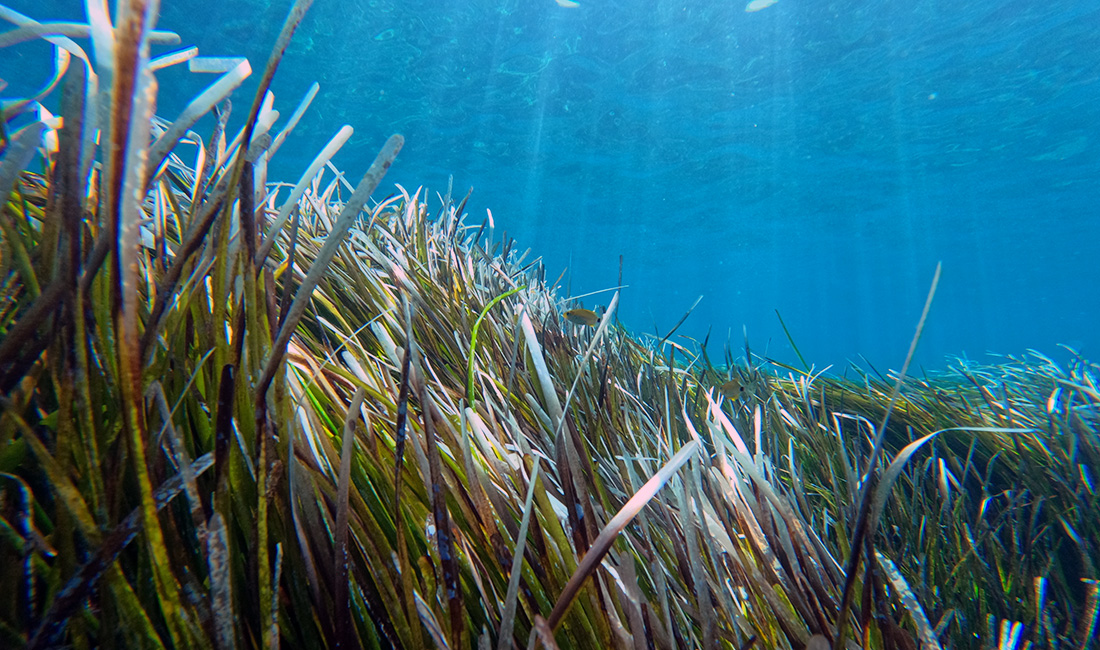
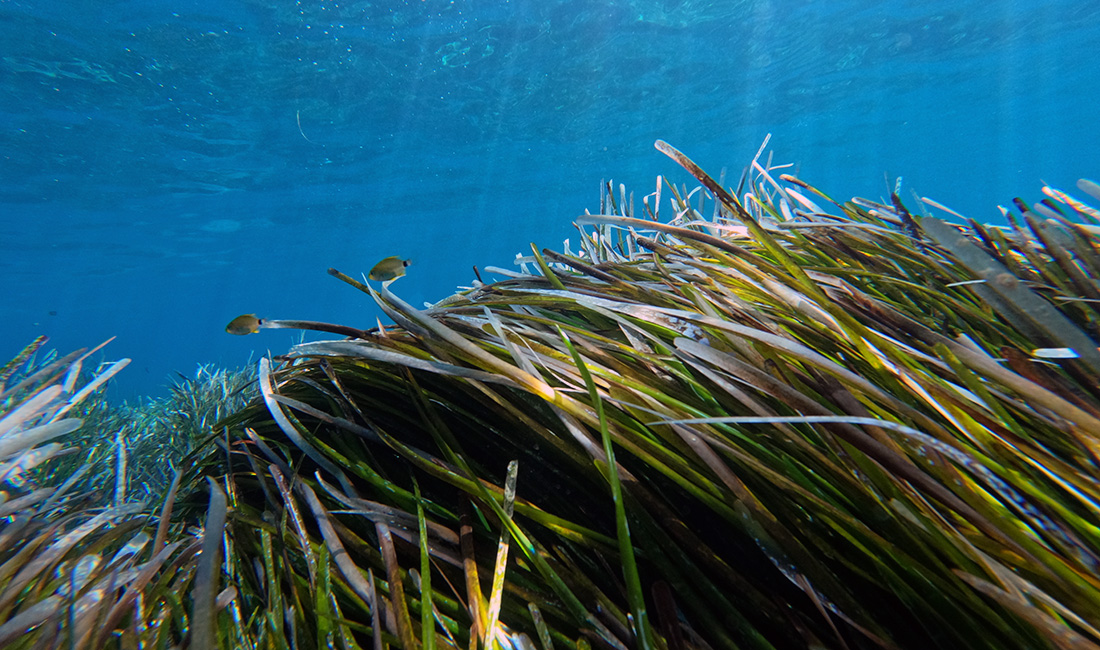
The increasing frequency of storms, invasive algal species, agricultural and industrial chemical run-off, improperly managed desalination, water treatment and sewage plants, fishing trawlers, fish farms, boat anchoring, and alterations of the coast from coastal, marina and industrial development are some of the threats affecting the health and survival of P. oceanica meadows. These all have a detrimental effect on their future. They can result in not only pulling up seagrasses that are new and poorly secured by their root system to rocks, sand, and the sea floor, but also create an imbalance of nutrients in the ecosystem. This can result in increased overgrazing by herbivores, decreased rate of photosynthesis, creation of dead zones, and prevention of the shoreward migration of the seagrass.
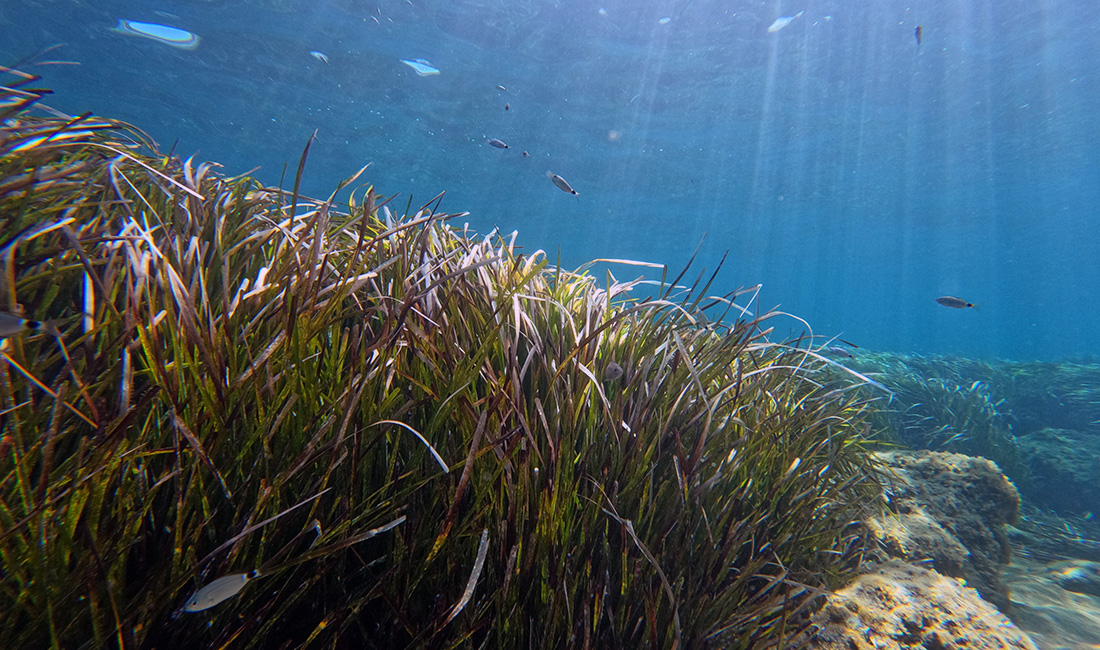
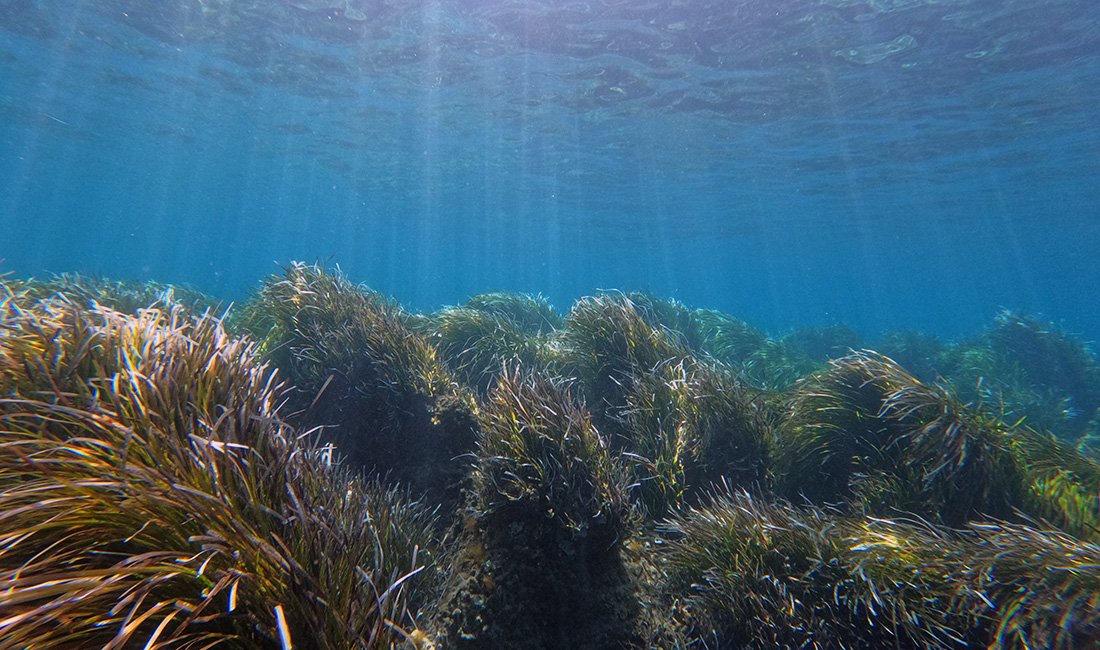
The Decline of the Meadows
The meadows are estimated to have regressed by approximately 39% over the last 105 years. Attention to the importance of the meadows in the Mediterranean began in the 1970’s. Since then, P. oceanica has become a protected species via a number of different agreements and directives: Internationally by The RAMSAR Convention, the Berne Convention (annex 1) and the Barcelona Convention (annex 2), the Water Framework Directive (2000), and the Marine Strategy Framework Directive (MSFD, 2008). Meadows of Posidonia oceanica are listed in the EU Habitats Directive, particularly in Annex 1: “natural habitat types of community interest whose conservation requires the designation of special areas of conservation.”
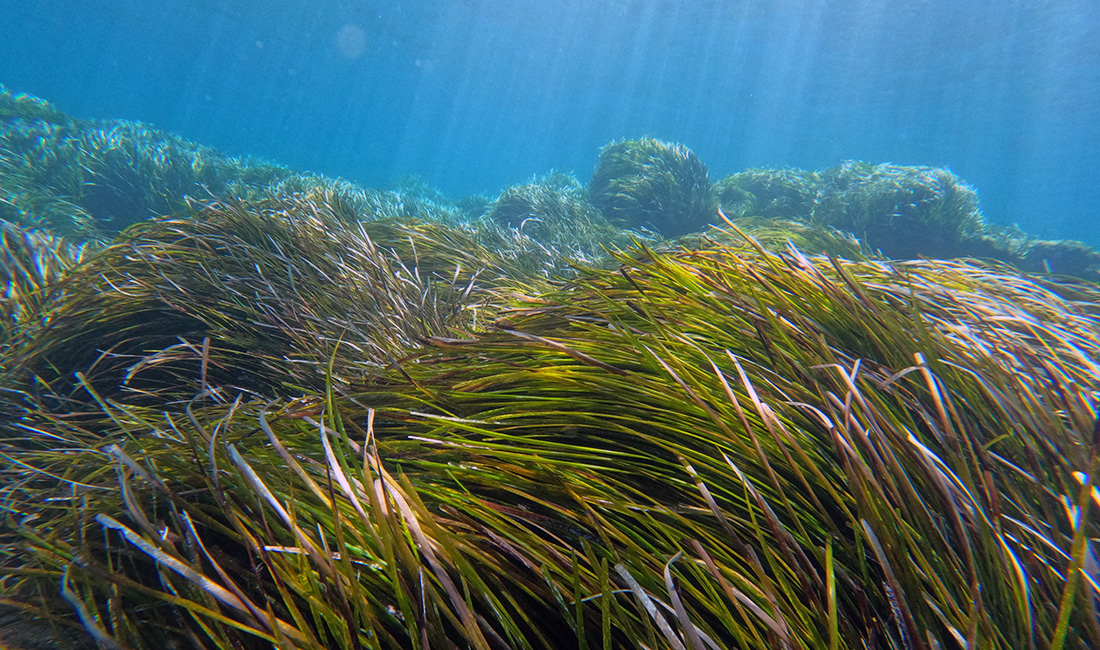
With these efforts, the decline has slowed and public awareness has been stimulated, but more work is necessary as the most recent reports still suggest a loss of meadows from 1.5 – 5% per year.
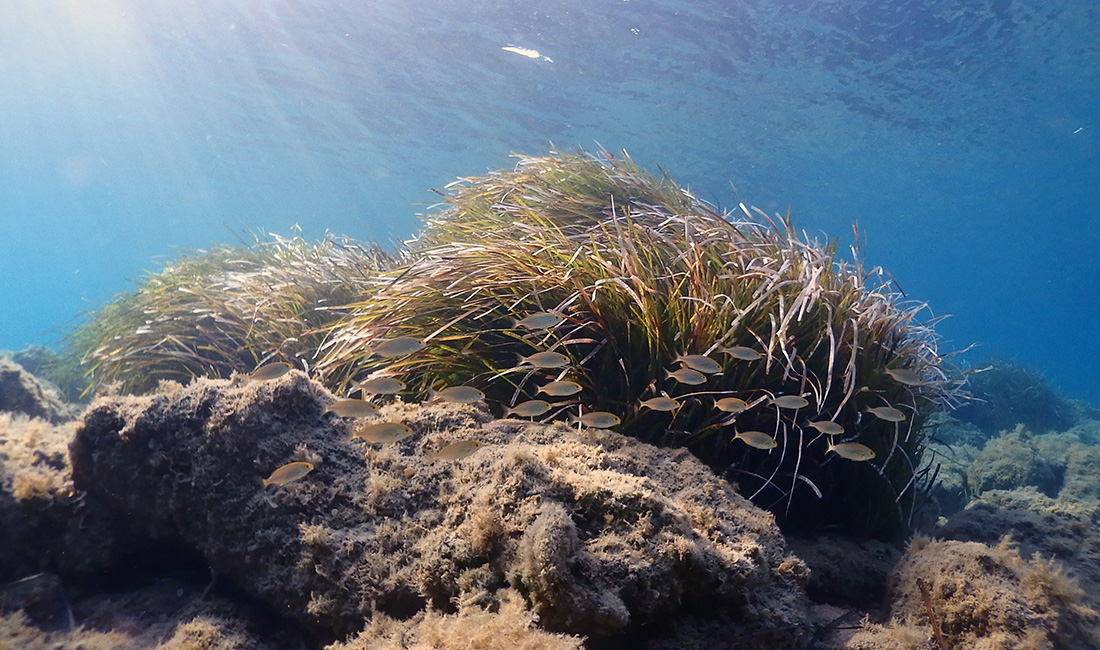
Seagrass meadow conservation by Wildlife Sense
The initial phase of our effort to protect seagrass meadows consists largely on mapping their current extent and status. Volunteers conduct snorkel surveys along the nearshore zone, collecting photographs, GPS location, depth, and any other species found within the meadows. The photographs are assessed for type of seafloor such as sand, rocks, unestablished seagrass or established meadows. All data are georeferenced to assess the current extent and seasonal or long-term changes. Snorkel surveys also identify potential threats, such as damage to the meadows by anchoring.
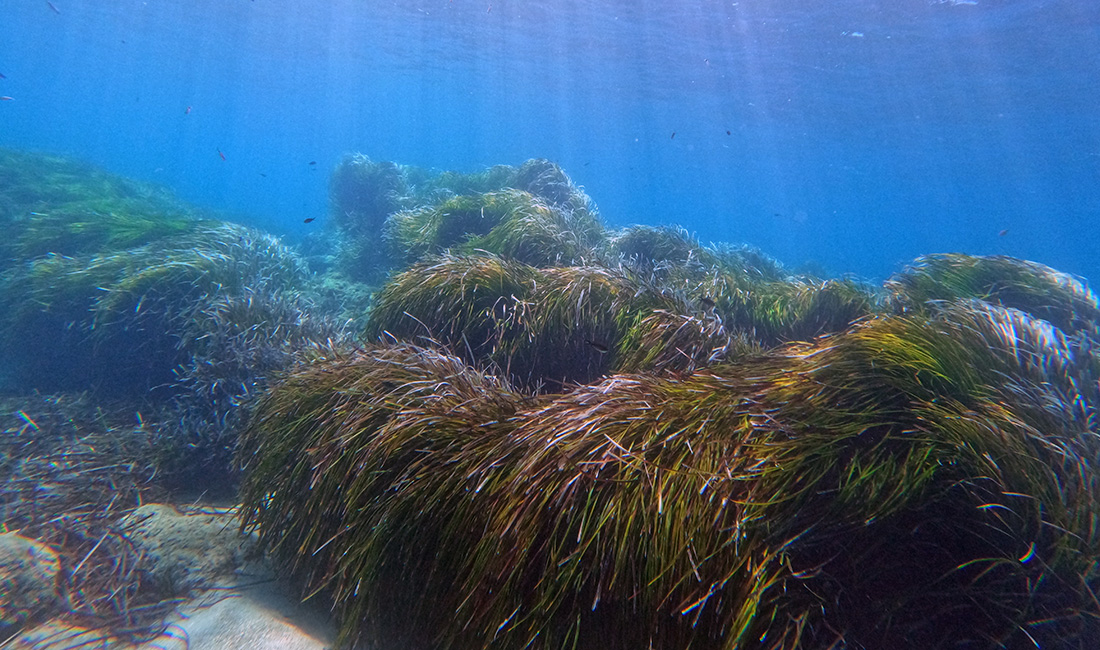
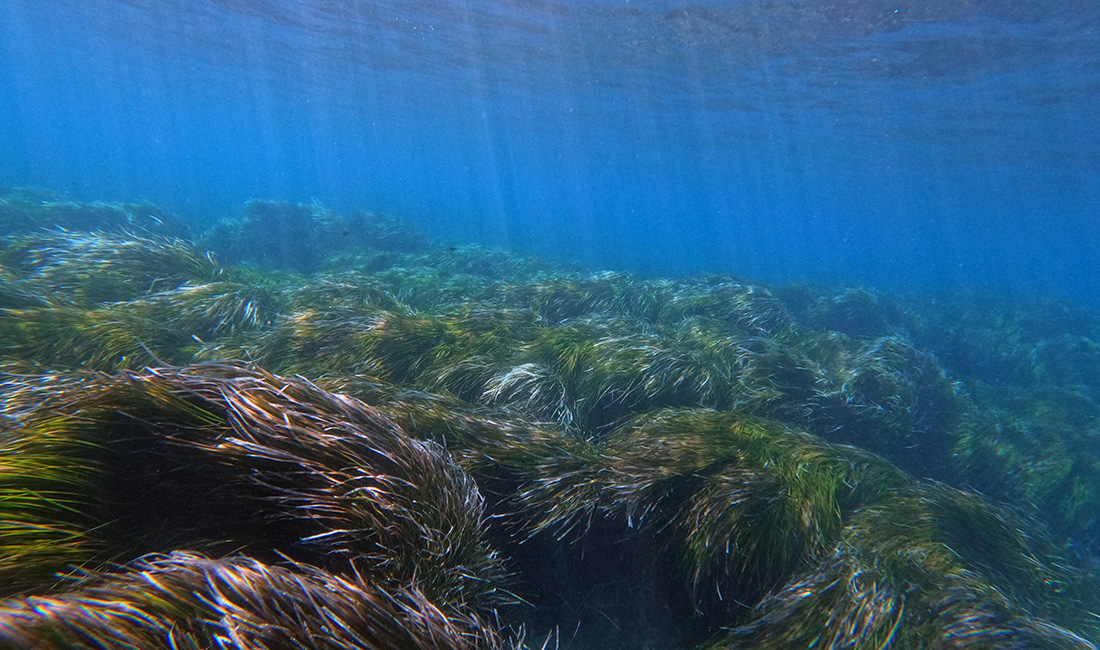
Once the meadows have been identified, our work will continue by monitoring the health and distribution of the meadows, looking to identify any potential or existing threats they face, include public awareness and education, and finding a way to collaborate with the local government, boaters, and fishermen to decrease the negative effects on the meadows. These are goals that have been achieved by others, and we hope to achieve in Kefalonia.
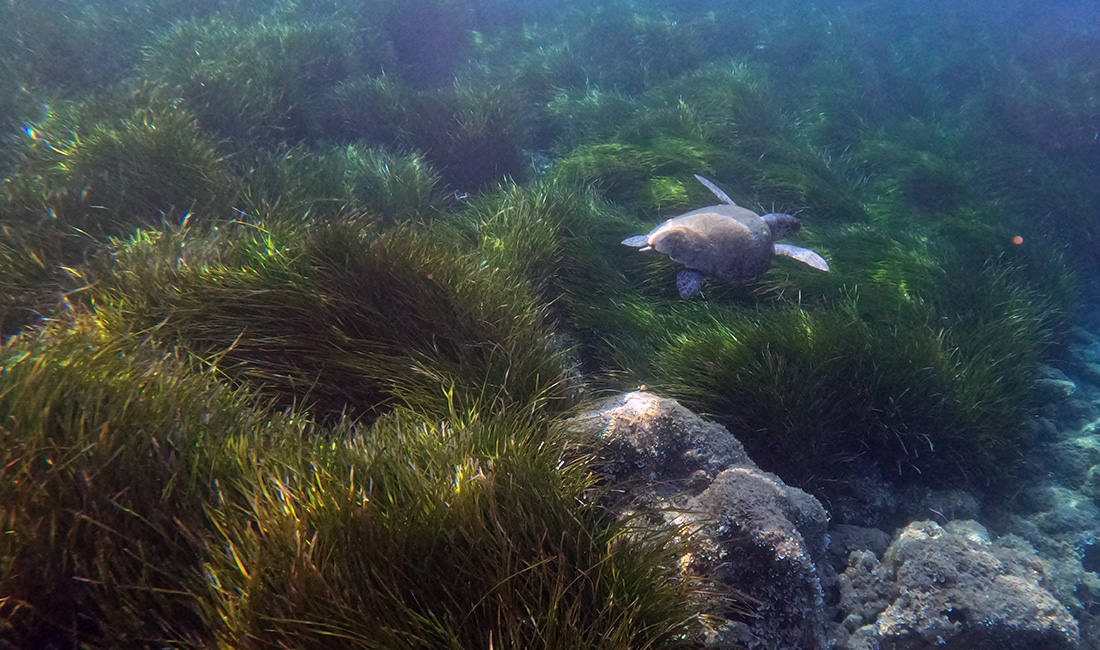
Sand Dunes
Sand dunes are sand deposits that have accumulated over thousands of years from rock erosion due to rain, glacier movement, earthquakes, and temperature changes.
The sand that has been created moves toward the coast through rivers, rain and wind.
These accumulate both inland and or along the coast, aided by various weather conditions, changes in sea level, and the melting of glaciers. Occasionally sand is formed directly on the beach by the erosion of sea cliffs.
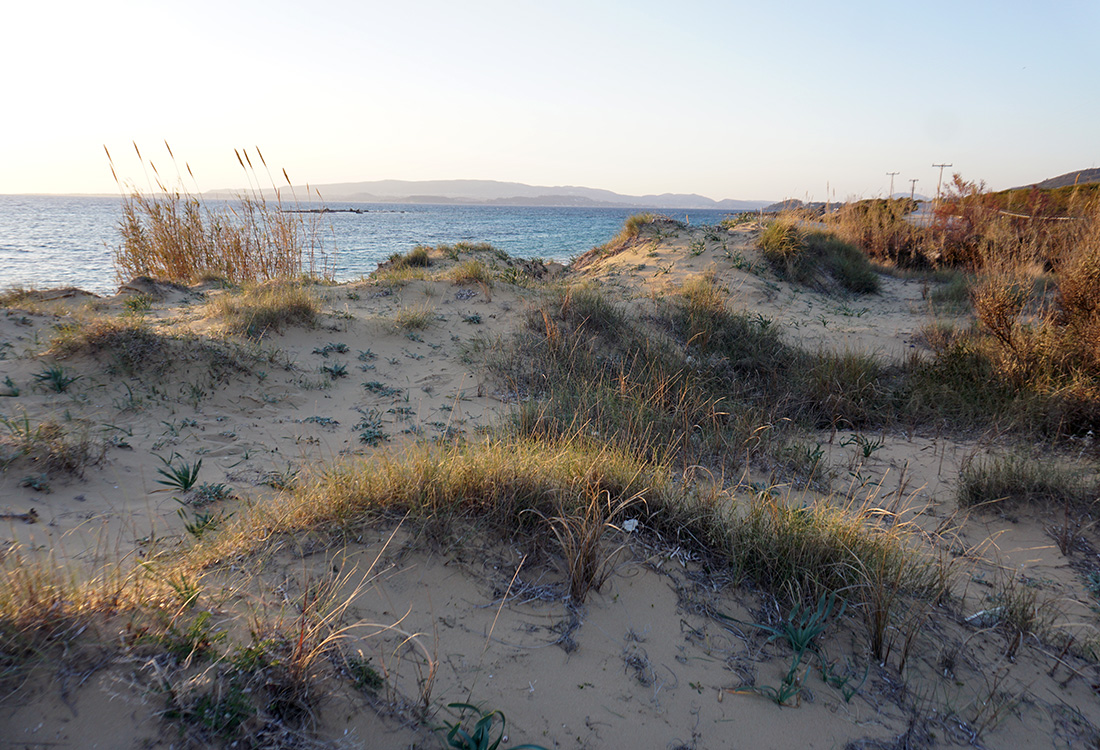
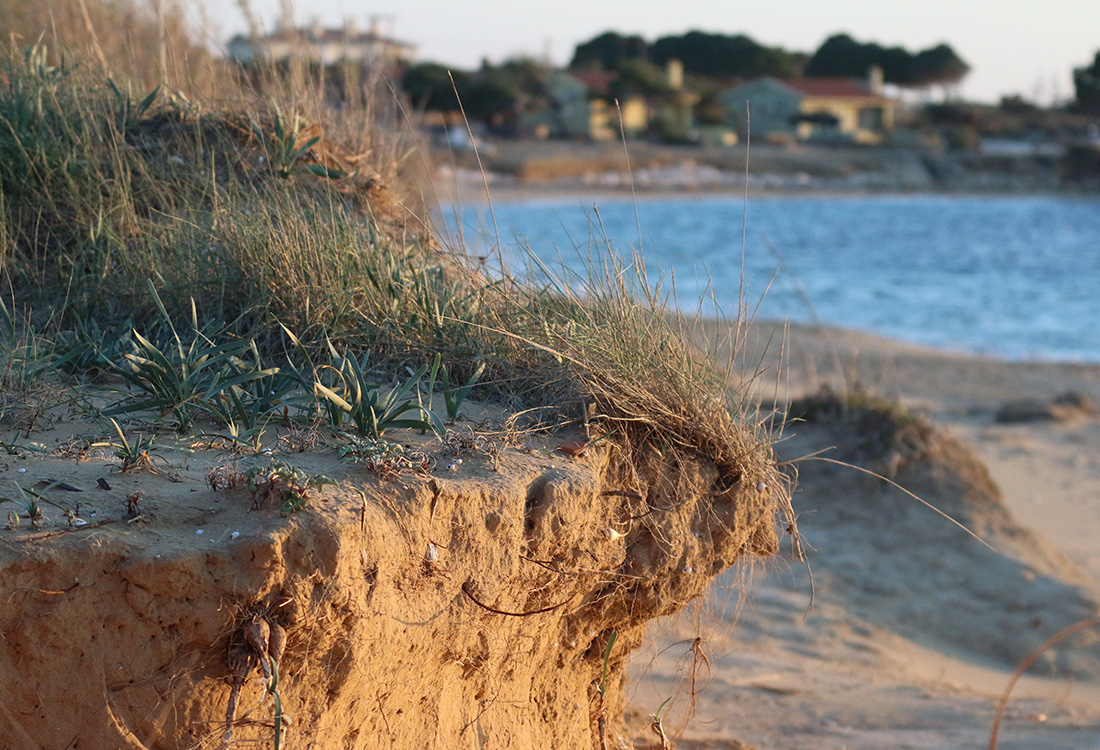
These sand deposits can extend for hundreds of meters if they remain undisturbed over a long period, and in that case, vegetation will have time and space to establish itself. Vegetation plays an important role in the health of sand dunes as it helps to stabilize them by holding sand in place with its roots. This decreases the erosion of sand dunes and their overall mobility as it becomes hard for the wind and waves to move sand around. Therefore any new sand that is deposited onto the dune will remain in place there, and vegetation will then have the opportunity to extend forward resulting in a healthier and more stable dune.
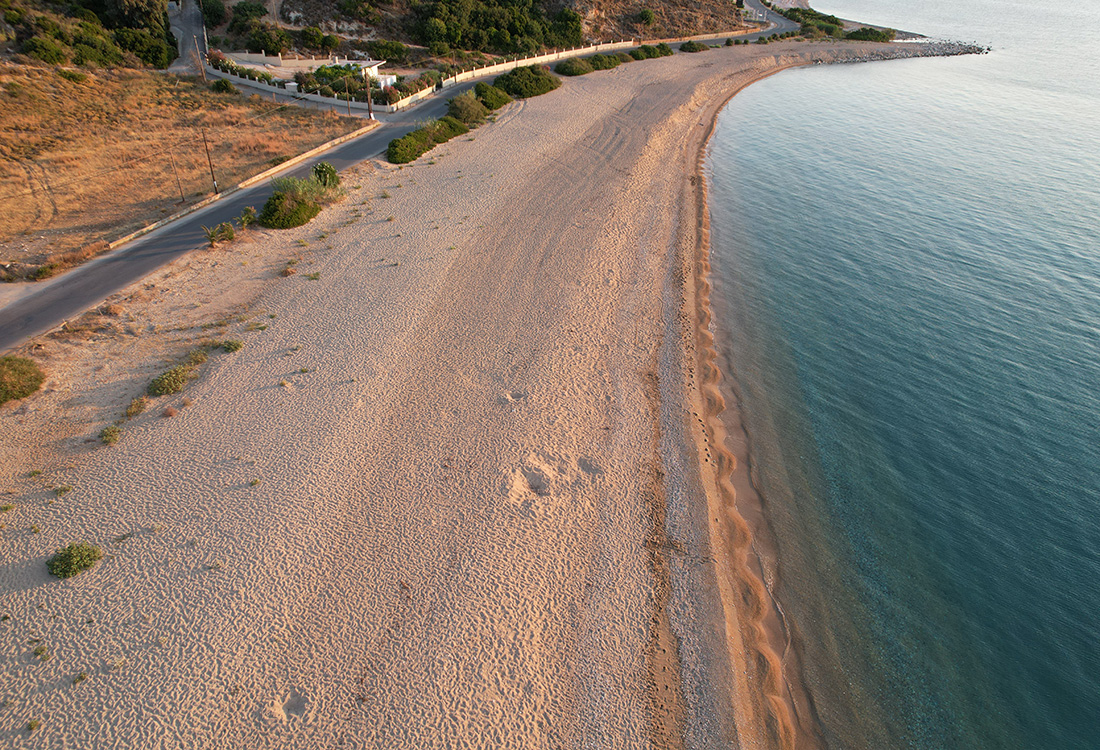
Importance
Sand dunes occur in highly energetic and dynamic environments that may change within weeks, and their ability to move and adapt to these changes creates a buffer zone that withstands the impact of climate change. A healthy dune system located at the back of a beach helps to protect the coast from accelerated erosion caused by storms as they form a physical barrier between the sea and land.
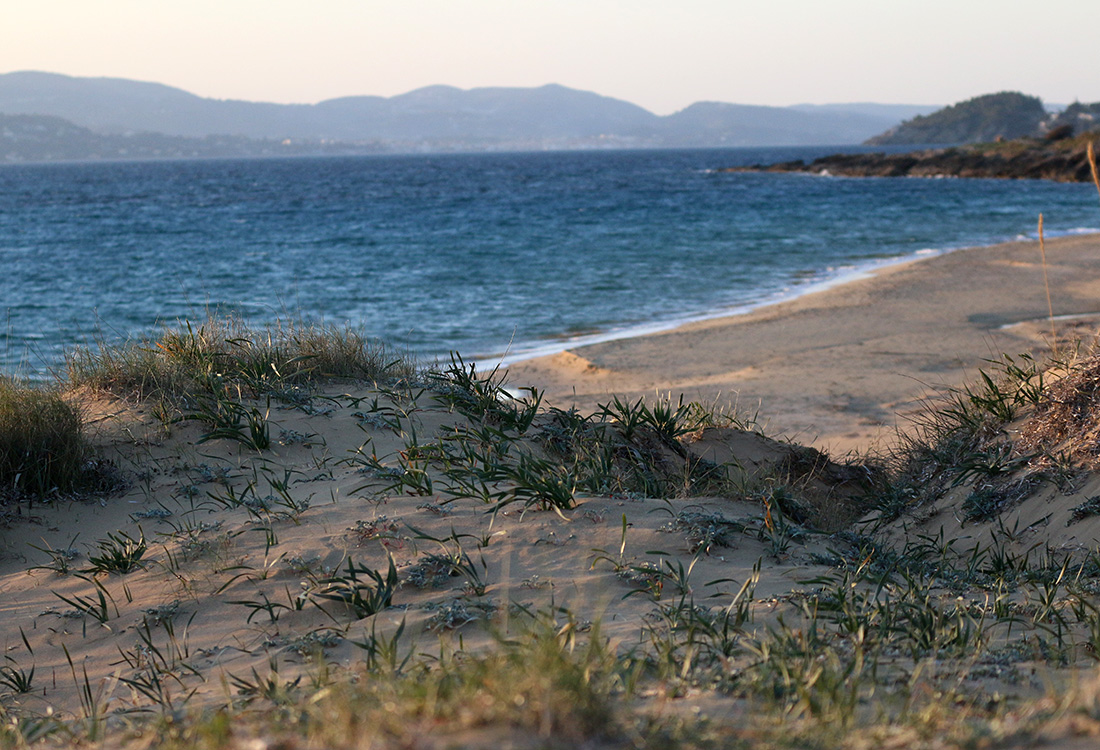
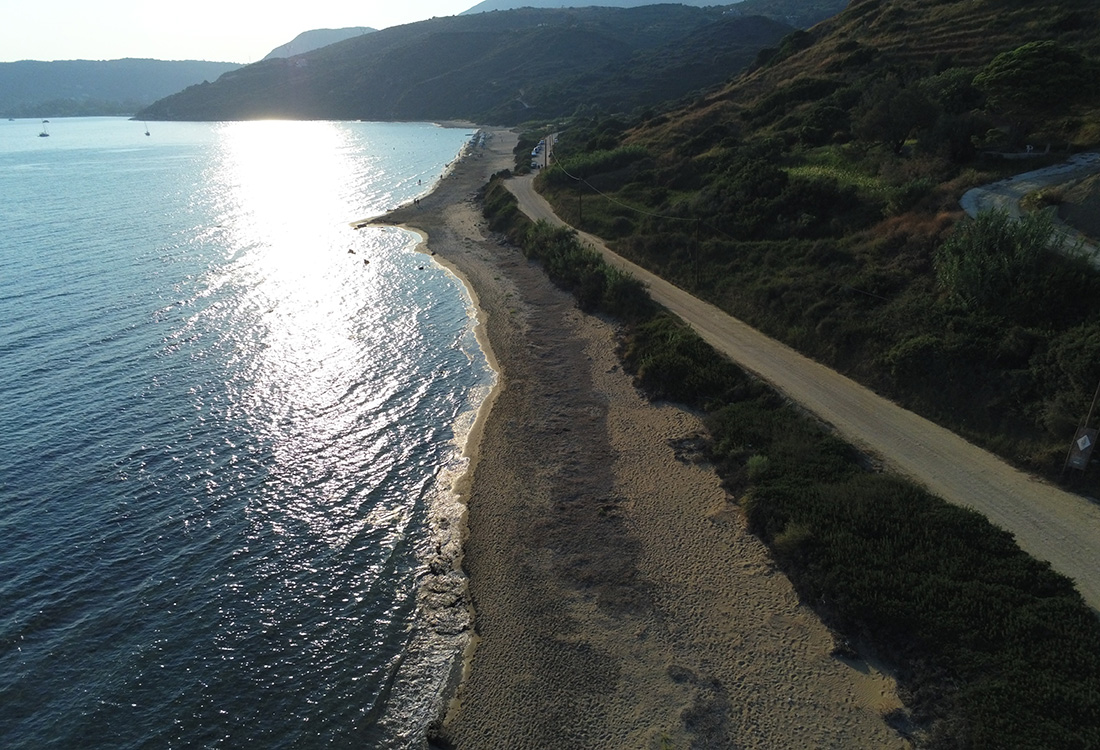
Sand dunes are also unique ecosystems providing shelter, food, and a “ground” area for the reproduction of many insects, spiders, birds, and reptiles. Many plant species that have specifically adapted to survive the unwelcoming conditions, such as drought, salt spray, and rapid burial by sand, can also be found here. In places where the dunes have been left undisturbed for long enough to form a land mass, brine water can be accumulated and a wetland might be formed. Wetlands are important ecosystems themselves, as they are rich in flora and fauna.
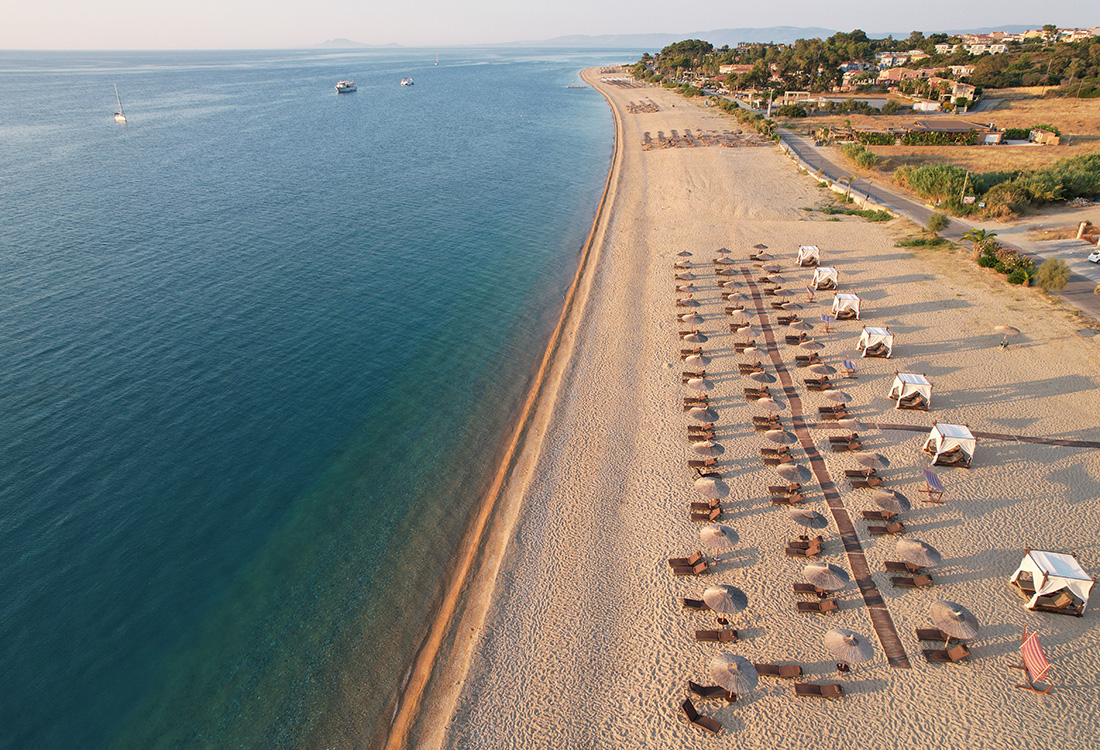
Unfortunately, not many sand dune studies have been conducted in Kefalonia which complicates their protection. Even though sand dunes are protected under the European Habitats Directive, no measures have yet been enforced in Kefalonia to prevent their erosion since there is no account of where they exist and their current state.
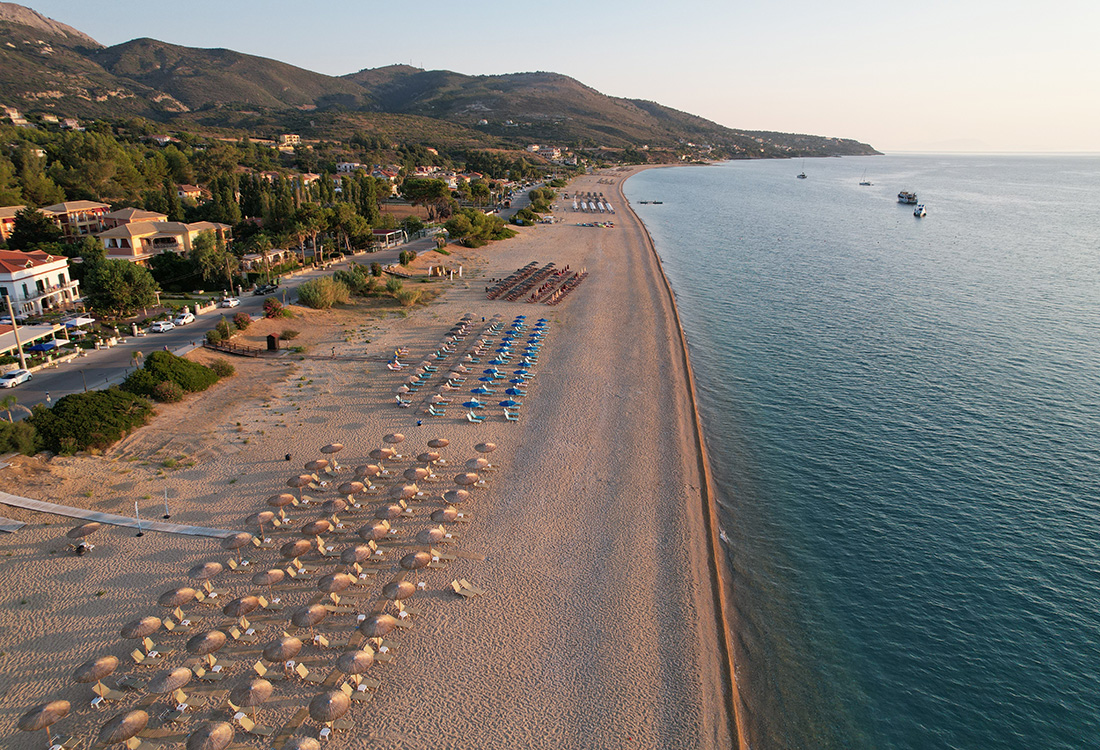
Threats
Two of the main threats sand dunes face in Kefalonia are tourism-related activities and construction. Many holiday homes, beach bars, restaurants, and resorts are built on land that has not been designated as a protected sand dune area. This accelerates the erosion of the coast, combined with increased human activity during the summer months, exposing the dunes to great pressure.
As it was mentioned earlier, sand dunes protect the coast from climate change, but this does not mean that they are not affected by it. Climate change is the reason the areas are facing big storms more regularly and in regions where the beach is not wide enough for the dune to move further back, the waves will wash over the sand eroding the dunes and the beach. Occasionally, the sand dunes disappear completely. With the increased frequency of storms, it does not allow enough time for the sand dune systems to re-establish.
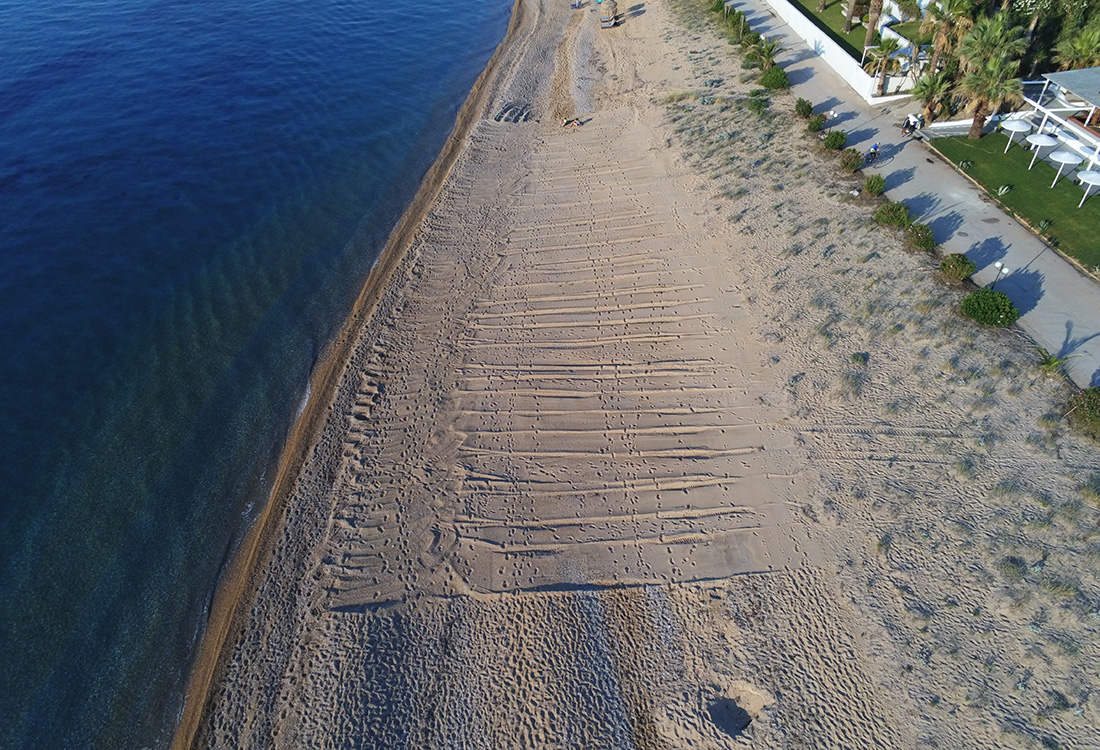
Volunteer at our Coastal Conservation Programme
Join our international team of volunteers in Kefalonia Island

